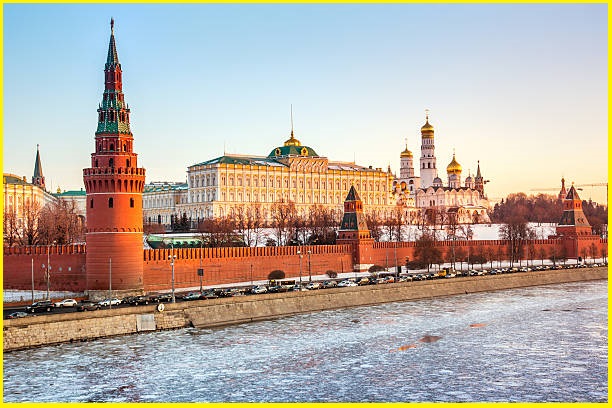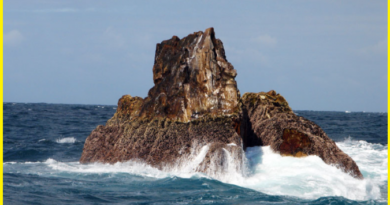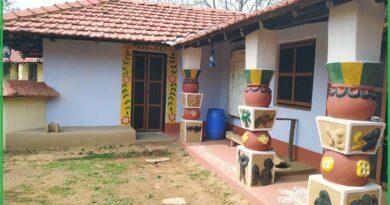Moscow Metropolis- Heartbeat of the Russian Nation
Moscow
Moscow is the capital city of Russia and one of the most significant cultural, political, and economic centers in the country. Moscow has a rich history dating back over 800 years. It was founded in the 12th century and has served as the capital of Russia since the late 15th century. Moscow played a central role in the development of the Russian state and has been witness to many historical events, including wars, revolutions, and periods of cultural flourishing.
Culture and Arts: Moscow is a cultural hub with numerous museums, theaters, art galleries, and concert halls. It is home to world-class cultural institutions such as the Tretyakov Gallery, Pushkin Museum of Fine Arts, and the Moscow Conservatory.
Economy: Moscow is the economic powerhouse of Russia, with a diverse economy driven by industries such as finance, commerce, manufacturing, technology, and tourism. It is home to the headquarters of many Russian and international companies.
Green Spaces-Despite being a bustling metropolis, Moscow boasts numerous parks, gardens, and green spaces where residents and visitors can relax and enjoy nature. The most famous park is Gorky Park, located along the Moskva River.
Moscow weather
Moscow experiences a continental climate with distinct seasonal variations. Here’s an overview of the weather in Moscow throughout the year.
Winter (December to February)
Winter in Moscow is cold and snowy. Average temperatures range from around -10°C to -3°C. Snowfall is common, and the city is covered in snow for much of the winter. January is usually the coldest month, with temperatures occasionally dropping below -20°C.
Spring (March to May)
Spring in Moscow is characterized by gradual warming and melting snow. Average temperatures increase from around -2°C in March to 14°C in May. Spring can be unpredictable, with fluctuations in temperature and occasional snow or rain showers.

Summer (June to August)
Moscow summers are relatively warm and humid. Average temperatures range from around 15°C in June to 23°C in August. July is the warmest month, with temperatures occasionally exceeding 30°C . Summer days are long, with the sun setting late in the evening, providing ample daylight for outdoor activities.
Also Read- The Lonely and Coldest Inhabited Place On Earth-Oymyakon Russia
Autumn (September to November)
Autumn in Moscow is characterized by cool temperatures and colorful foliage. Average temperatures decrease from around 15°C in September to 0°C in November. The weather becomes increasingly unpredictable, with fluctuating temperatures, rain, and occasional early snowfall.
It’s important to note that Moscow’s weather can be variable, and sudden changes are not uncommon, especially during transitional seasons like spring and autumn. It’s advisable to check the weather forecast before traveling to Moscow and to dress accordingly for the season. Additionally, Moscow experiences significant temperature variations between day and night throughout the year, so layering clothing is often recommended.
Places to visit in Russia
Russia is a vast and diverse country, offering a wide array of attractions and destinations for travelers to explore. Here are some of the top places to visit in Russia.
Moscow
Moscow is the capital city of Russia and one of the most significant cultural, historical, and economic centers in the country. Moscow has a rich and storied history that spans over 800 years. It was founded in the 12th century and has served as the capital of Russia since the late 15th century. Moscow has been witness to many pivotal events in Russian history, including wars, revolutions, and cultural movements.
Moscow is home to numerous iconic landmarks and attractions-
The Kremlin-A historic fortified complex that houses the official residence of the President of Russia, as well as numerous palaces, cathedrals, and museums.
Red Square- The central square in Moscow, surrounded by landmarks such as St. Basil’s Cathedral, Lenin’s Mausoleum, the State Historical Museum, and the GUM department store.

Bolshoi Theatre- One of the world’s most renowned opera and ballet theaters, known for its grand performances and opulent architecture.
Moscow Metro-An extensive and ornately decorated subway system that serves as both a mode of transportation and a showcase of Soviet-era art and architecture.
Christ the Savior Cathedral- A magnificent Orthodox cathedral that stands on the site of a historic church demolished during the Soviet era.
St. Petersburg
Often referred to as the “Venice of the North,” St. Petersburg is renowned for its stunning architecture, grand palaces, and picturesque canals. Highlights include the State Hermitage Museum, Peter and Paul Fortress, the Church of the Savior on Spilled Blood, and the Mariinsky Theatre. Founded by Tsar Peter the Great in 1703, St. Petersburg served as the capital of the Russian Empire for over two centuries until the capital was moved back to Moscow in 1918. The city has played a central role in shaping Russian history, culture, and identity.
Golden Ring
The Golden Ring is a series of historic cities and towns northeast of Moscow, known for their well-preserved medieval architecture and rich cultural heritage. Some of the notable cities in the Golden Ring include Suzdal, Vladimir, Sergiev Posad, and Rostov Veliky. The Golden Ring is a loop of ancient cities and towns that form a ring around Moscow, primarily in the European part of Russia. The cities are situated in the areas of the upper and middle Volga River basin.
The cities of the Golden Ring played a significant role in the formation of the Russian state and its cultural identity. They were centers of trade, craftsmanship, and religious life during the medieval period and served as important political and cultural hubs.
Trans-Siberian Railway
One of the world’s most famous train journeys, the Trans-Siberian Railway spans nearly 6,000 miles across Russia, connecting Moscow with Vladivostok in the Russian Far East. Travelers can embark on epic adventures through diverse landscapes, remote villages, and historic cities along the route.
Lake Baikal
Located in Siberia, Lake Baikal is the deepest and oldest freshwater lake in the world, known for its crystal-clear waters, stunning scenery, and unique biodiversity. Visitors can explore the lake’s shores, hike in the surrounding mountains, and experience the culture of local Buryat communities.
Kazan
The capital of Tatarstan, Kazan is a vibrant city where East meets West. Highlights include the Kazan Kremlin, a UNESCO World Heritage Site, the Qolşärif Mosque, the Temple of All Religions, and the vibrant Bauman Street.
Sochi
Located on the Black Sea coast, Sochi is Russia’s premier resort destination, known for its subtropical climate, beautiful beaches, and outdoor recreational activities. Visitors can enjoy hiking in the nearby Caucasus Mountains, exploring the Sochi Arboretum, and experiencing the vibrant citylife.

Yekaterinburg
Situated on the border between Europe and Asia, Yekaterinburg is a dynamic city with a rich history and cultural scene. Highlights include the Church on the Blood, built on the site of the Romanov family’s execution, the Yeltsin Center, and the Europe-Asia Border Monument.
Kamchatka Peninsula
A remote and pristine region in Russia’s Far East, Kamchatka is known for its stunning volcanic landscapes, geothermal hot springs, and diverse wildlife. Visitors can explore UNESCO World Heritage Sites such as the Valley of Geysers and Kronotsky Nature Reserve.
Veliky Novgorod
One of Russia’s oldest cities, Veliky Novgorod is known for its well-preserved medieval architecture, historic churches, and ancient Kremlin. Highlights include St. Sophia Cathedral, the Novgorod Kremlin, and the open-air museum of wooden architecture, Vitoslavlitsy.
These are just a few highlights of the many incredible destinations that Russia has to offer. From vibrant cities to remote wilderness areas, Russia has something to offer every type of traveler.
How to Reach Russia
Flying is the most common way to reach Russia from international destinations. Major cities like Moscow, St. Petersburg, and Vladivostok have international airports with connections to cities around the world. You can book flights to Russia through various airlines, and most international flights land at major airports such as Sheremetyevo International Airport in Moscow, Pulkovo Airport in St. Petersburg, and Koltsovo Airport in Yekaterinburg.
If you are traveling from Europe or Asia, you can consider taking the Trans-Siberian Railway, one of the longest train routes in the world. The Trans-Siberian Railway connects Moscow with Vladivostok in the Russian Far East, passing through several cities and landscapes along the way. Some routes branch off to cities like St. Petersburg and Beijing, China.

While not as common as air or train travel, there are bus services that connect neighboring countries with Russia. These services are typically used for shorter distances or by budget travelers.
Before planning your trip to Russia, make sure to check visa requirements, travel restrictions, and entry regulations, as these may vary depending on your nationality and the purpose of your visit. Additionally, consider factors such as weather conditions, travel advisories, and transportation options available within Russia.
Delhi to Moscow Flight
There are no direct flights from Delhi to Moscow. However, travelers can find numerous connecting flights operated by various airlines that connect Indira Gandhi International Airport in Delhi to Sheremetyevo International Airport or Domodedovo International Airport in Moscow. The duration of the flight and the number of layovers can vary depending on the airline and the specific route. Typically, connecting flights from Delhi to Moscow have layovers in cities such as Istanbul, Dubai, Doha, or Abu Dhabi.
It’s advisable to use flight booking websites or contact airlines directly to check for the most up-to-date information on flight schedules, availability, and prices for travel between Delhi and Moscow. Additionally, travelers should consider visa requirements and any travel restrictions or entry requirements due to the COVID-19 pandemic before planning their trip.



